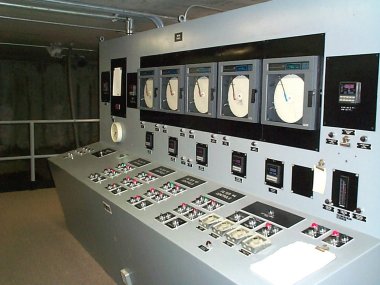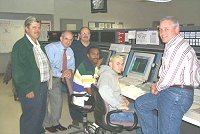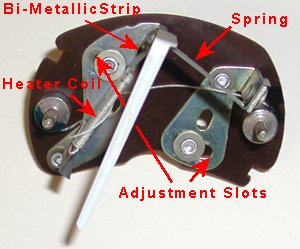

The controller is the place where the control algorithm is executed. Although most control algorithms in the chemical industry are now executed in digital systems (computers) the hardware isn't particularly important - what is important is how the controller processes changes in its inputs to produce changes in its output signal.


 A very
common type of controller that doesn't require any electronics is a bi-metallic strip.
This is a strip made up of of two metals with different rates of thermal expansion, bonded
together longitudinally. The different rates of thermal expansion cause the strip to bend
when it is heated or cooled. The strip can then be used to make or break electrical contacts
to switch things on and off depending on the temperature. Bimetallic strips are used to
control toasters and home central heating systems (amongst many other uses). Another
easily obtained controller is the human brain - many plants are still controlled manually
for higher level control (e.g. production rate, quality, etc). Humans learn how to control
a process by experience and no maths is involved!
A very
common type of controller that doesn't require any electronics is a bi-metallic strip.
This is a strip made up of of two metals with different rates of thermal expansion, bonded
together longitudinally. The different rates of thermal expansion cause the strip to bend
when it is heated or cooled. The strip can then be used to make or break electrical contacts
to switch things on and off depending on the temperature. Bimetallic strips are used to
control toasters and home central heating systems (amongst many other uses). Another
easily obtained controller is the human brain - many plants are still controlled manually
for higher level control (e.g. production rate, quality, etc). Humans learn how to control
a process by experience and no maths is involved!